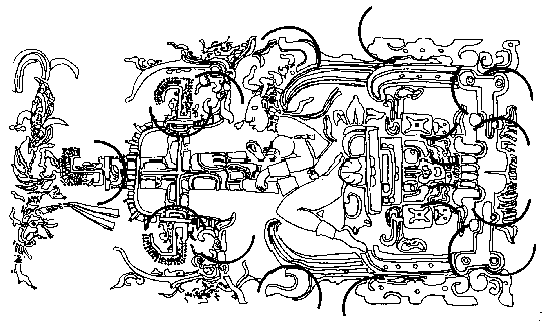Science in Ancient Artwork
PAKAL, THE MAYA ASTRONAUT:
A STUDY OF ANCIENT SPACE TRAVEL
by Charles William Johnson
PART: I
The Spacecraft's Elements
In order to visualize the concept of movement within the sculpture of Pakal in a systematic manner, let us break the image down into its distinct elements. For now we shall examine the constituent parts of the spacecraft, saving a more detailed analysis of the remaining elements for a later essay. Therefore, let us examine: 1) the housing or base of the spacecraft; 2) the spacecraft's motor section; 3) the cross or canopy of the spacecraft or space module; and 4) what is commonly referred to as "the bird" that sits atop the entire figure.
 |
 |
|
 |
 |
As the above illustrations show, once the spacecraft
is viewed in a sectional manner, each particular element appears to reflect
its own logic of design. Each element seems to serve a specific purpose.
Let us examine then, these distinct elements from the perspective of mechanical
engineering, which might suggest specific functions for each particular
element.
By examining the detailed sections and parts of the spacecraft, a rather obvious
idea comes into view: that there are pivotal points and joints within the structure;
especially regarding the housing. Such an idea suggests that the different elements
represented therein may be revolved along specific axes. Let us offer an illustration
of the particular parts of the housing structure that evoke unions or joints,
points at which the elements may be unfolded or rotated.

©1995-2009 Copyrighted by Charles William Johnson
Part I |
"Pakal,
The Ancient Astronaut:
Paleoanimation of the Sculpture of the Maya at Palenque"